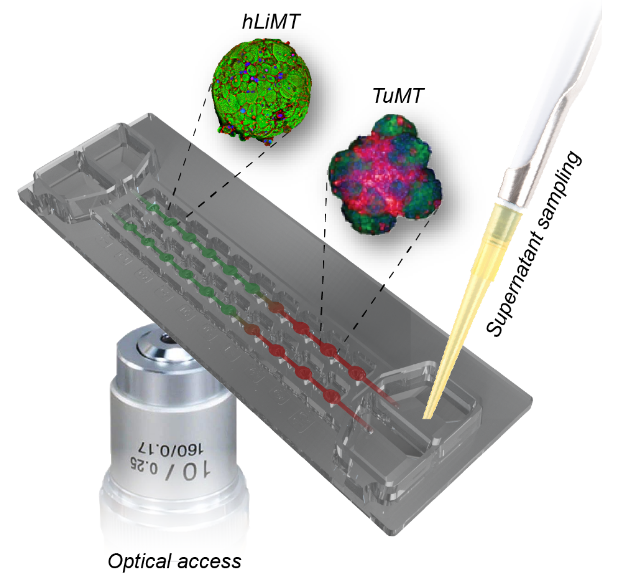Microfluidic system to study drug-drug interactions in vitro
Increasing drug-drug interactions in patients, treated with multiple medicines, require new methods to detect such complications. We developed a microfluidic in-vitro system that enables qualitative and quantitative assessments.
Drug–drug interactions (DDIs) occur when the pharmacological activity of one drug is altered by a second drug. As multimorbidity and polypharmacotherapy are becoming more common due to the increasing age of the population, the risk of DDIs is massively increasing. Therefore, in vitro testing methods are needed to capture such multiorgan events. In collaboration with external page InSphero AG, we developed a scalable, gravity‐driven microfluidic system featuring 3D microtissues (MTs) for the prediction of drug–drug interactions is used. Human liver microtissues (hLiMTs) were combined with tumor microtissues (TuMTs) and treated with drug combinations that are known to cause DDIs in vivo. The testing system is able to capture and quantify DDIs upon co‐administration of the anticancer prodrugs cyclophosphamide or ifosfamide with the antiretroviral drug ritonavir. Dosage of ritonavir inhibits hepatic metabolization of the two prodrugs to different extents and decreases their efficacy in acting on TuMTs.The achieved results were published in a paper by C. Lohasz et al., titled "Predicting metabolism‐related drug–drug interactions using a microphysiological multitissue system" in the journal Advanced Biosystems (Advanced Biosystems 2020, Article 2000079).
external page Advanced Biosystems by Wiley is publishing research into technologies that enhance and harness biological systems, including systems and synthetic biology, advanced therapeutics, and biohybrids and neurotechnology.
